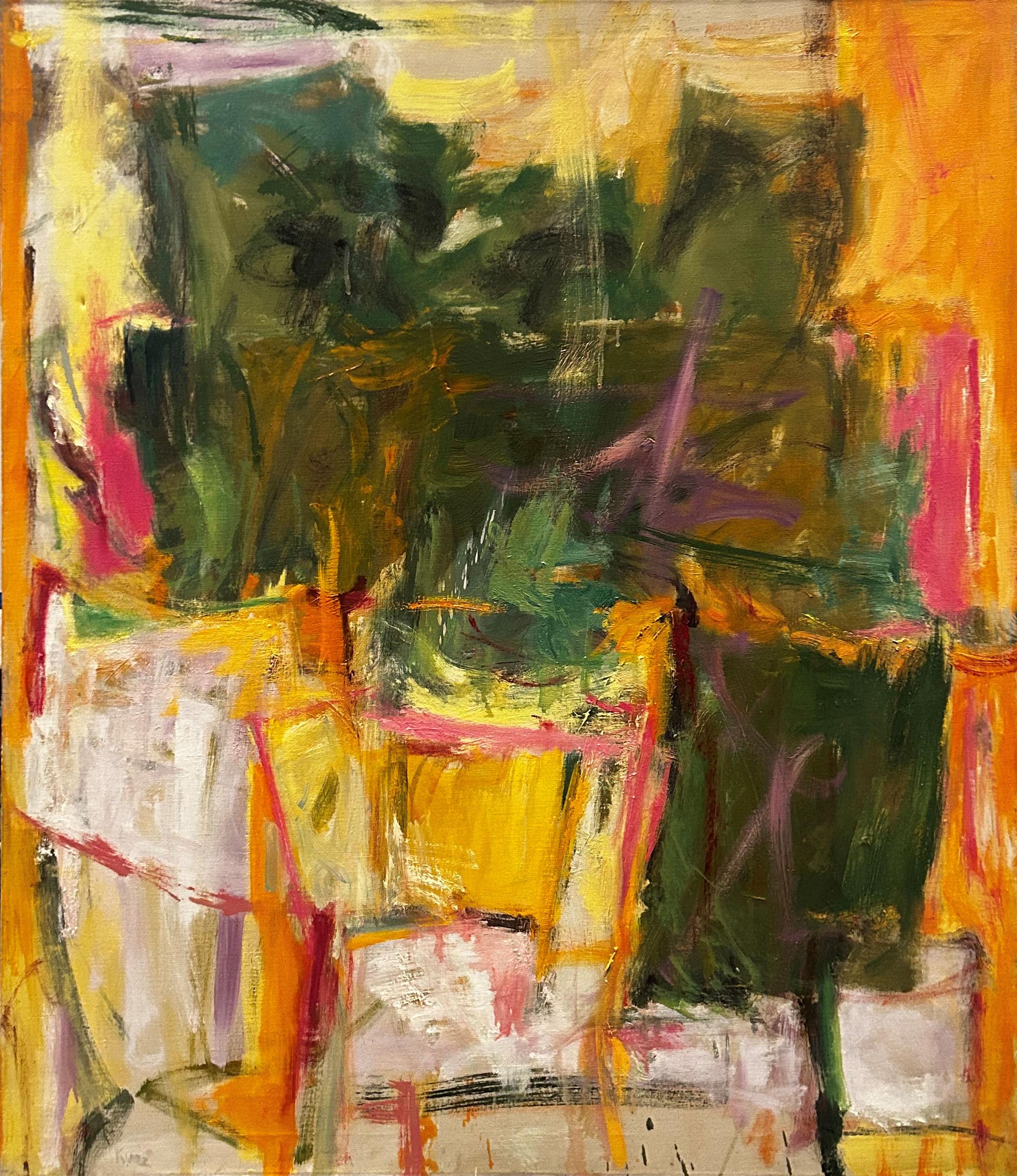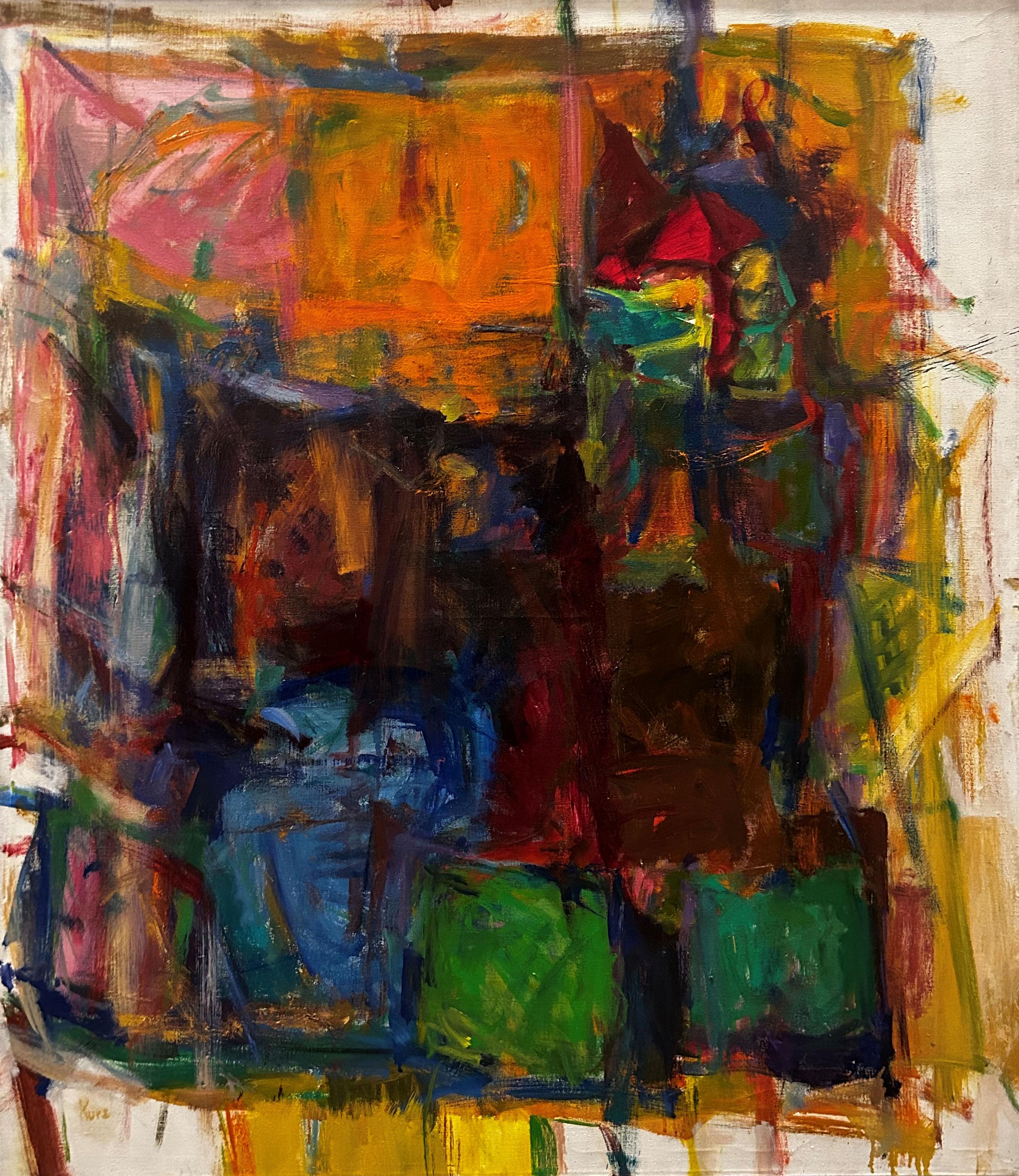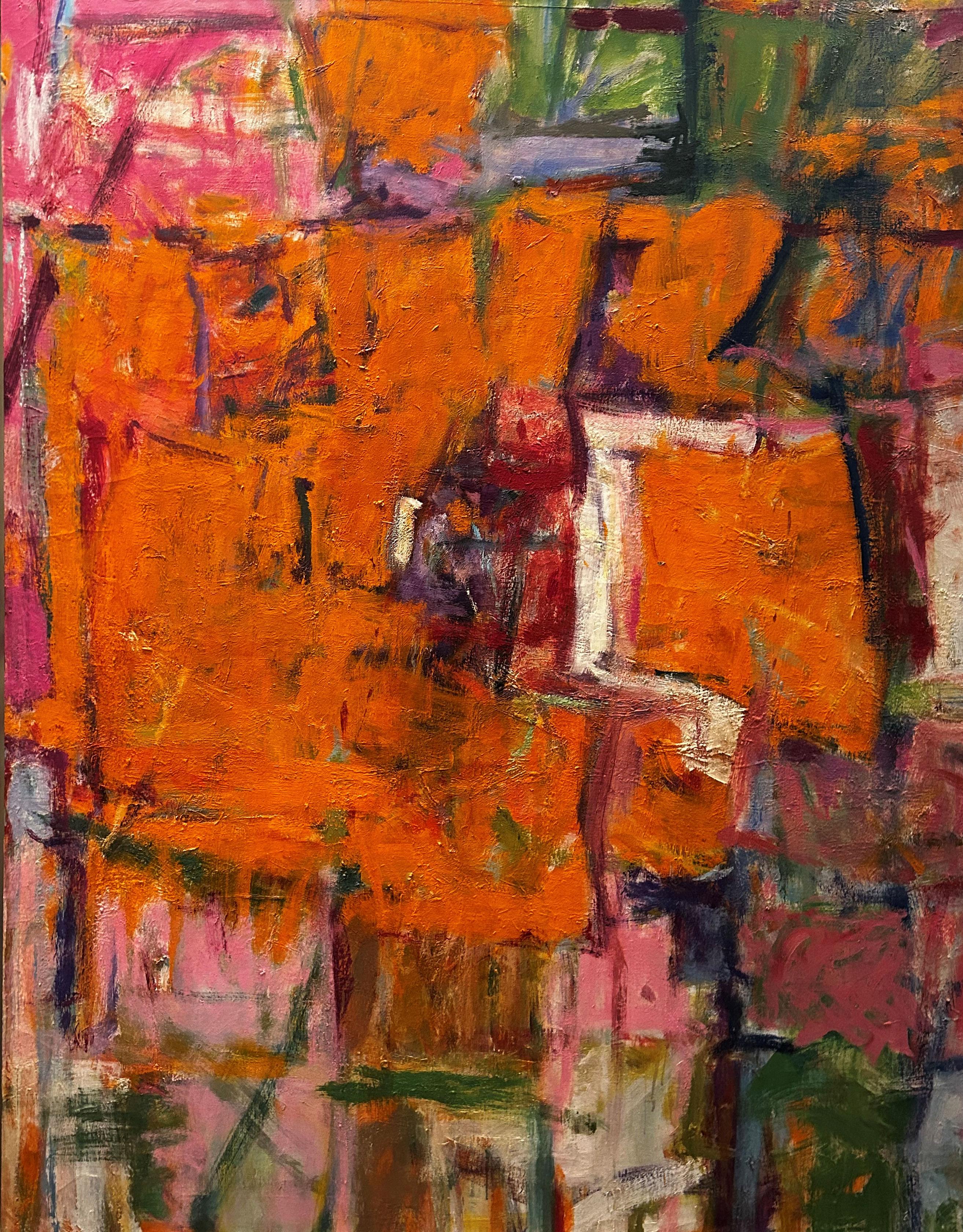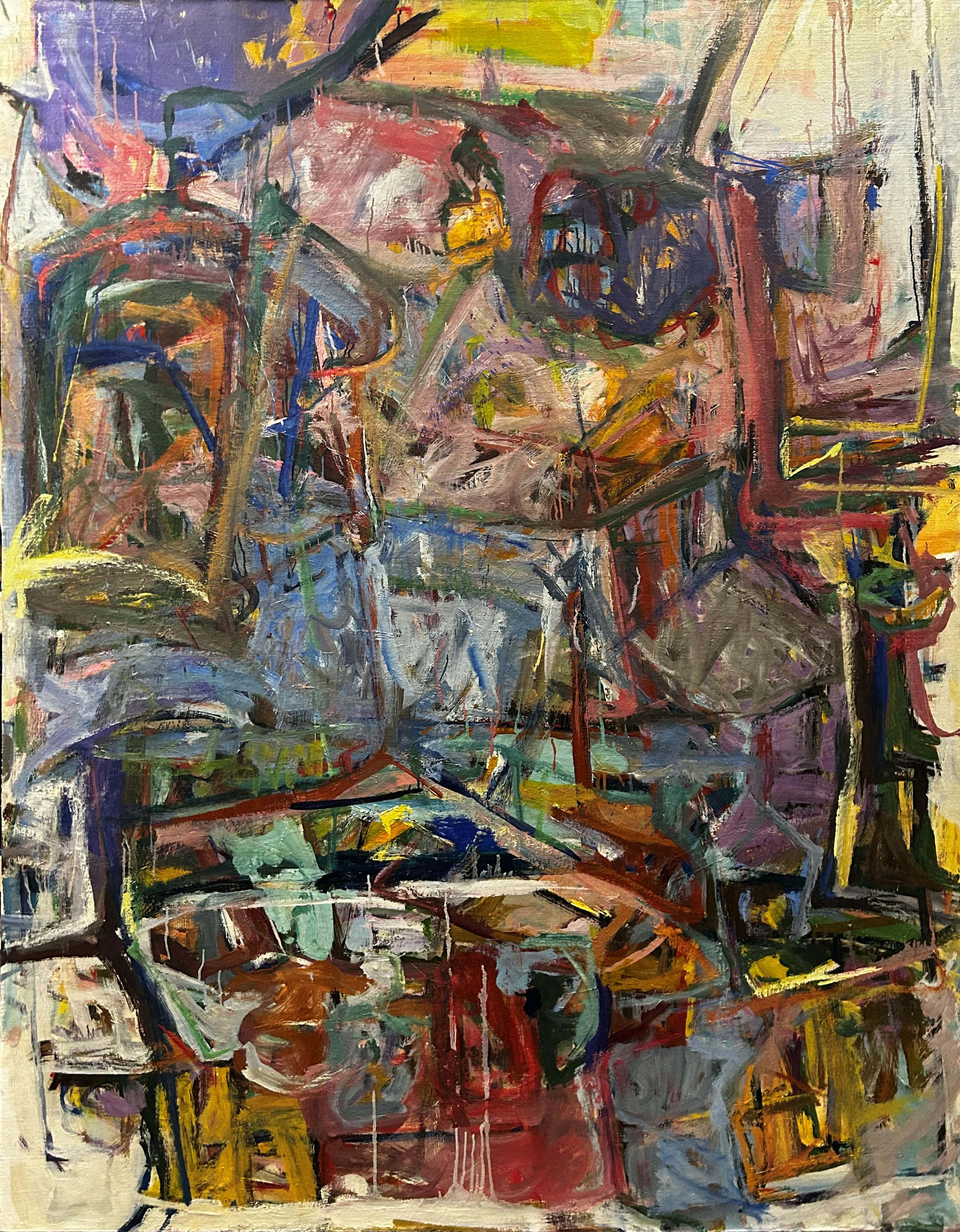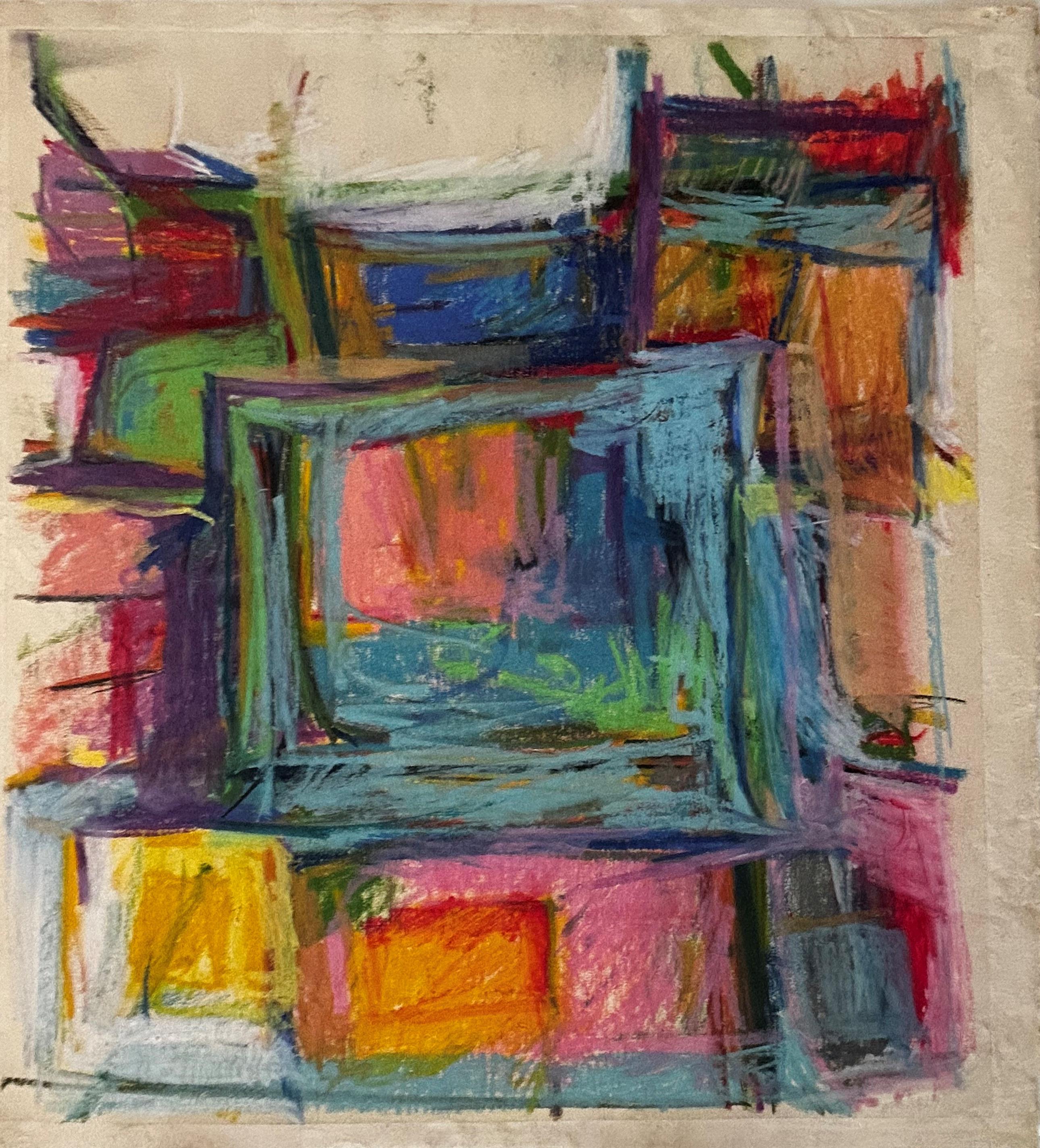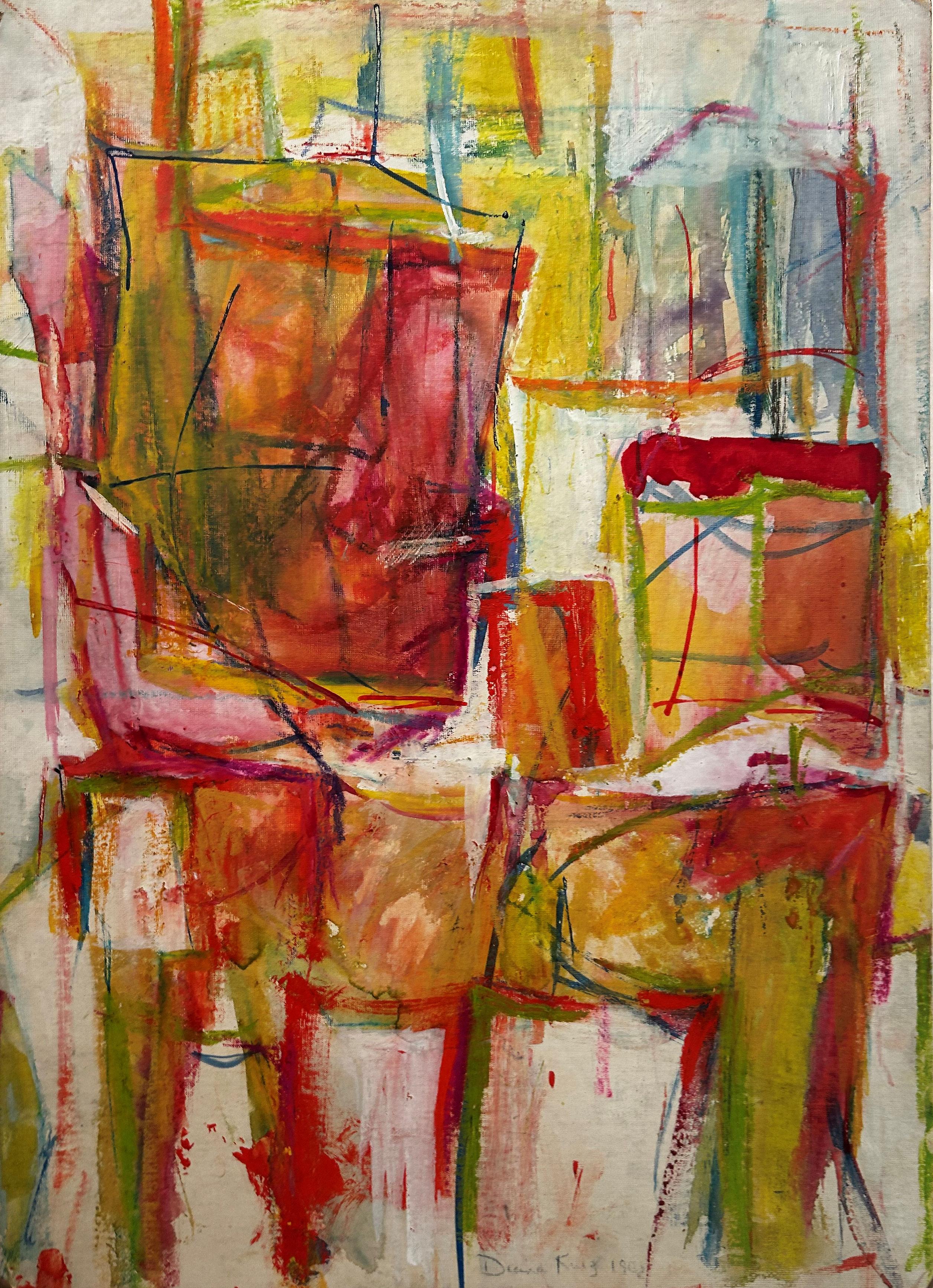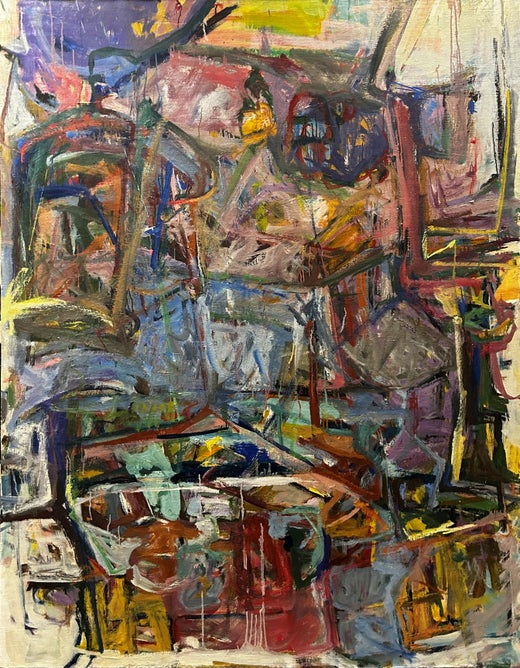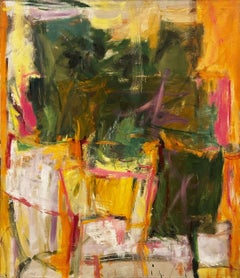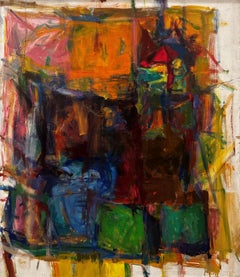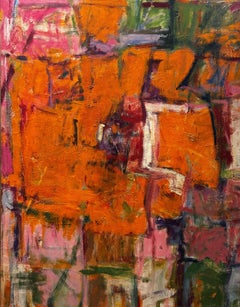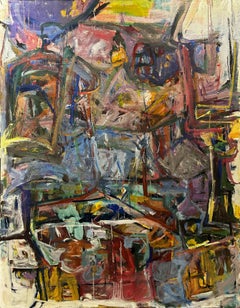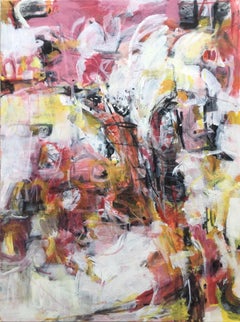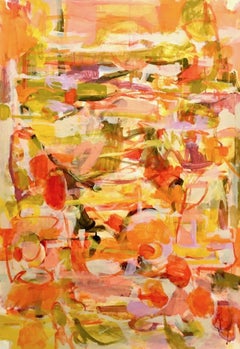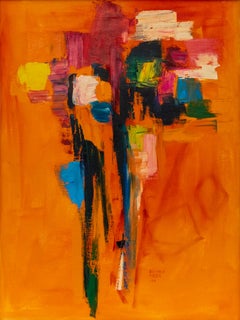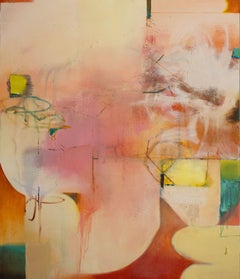Items Similar to "Summer Joy" Diana Kurz, circa 1960 Abstract Expressionist Colorist Composition
Want more images or videos?
Request additional images or videos from the seller
1 of 10
Diana Kurz"Summer Joy" Diana Kurz, circa 1960 Abstract Expressionist Colorist Composition1960
1960
$30,000
£23,126.32
€26,285.98
CA$42,745.60
A$46,502.79
CHF 24,538.81
MX$559,276.26
NOK 309,547.58
SEK 288,083.09
DKK 196,313.32
About the Item
Diana Kurz
Summer Joy, circa 1960
Signed and titled on verso
Oil on canvas
70 1/2 x 66 1/4 inches
Diana Kurz (born 1936) is an Austrian-born feminist painter. In 1938, Diana Kurz's family fled Austria, first to England and then to the United States. Kurz spent her childhood in Brooklyn and Queens, New York before earning her Bachelor of Fine Arts degree at Brandeis University (1957) and received a Master of Fine Arts degree in painting (1960) at Columbia University, where she studied with John Heliker, “one of the rare professors who encouraged his female students”, as Kurz later recalled.
Kurz was awarded a Fulbright Grant that gave her the opportunity to live and paint in France (1965–66), where Jean Hélion became a mentor. While there, she began to paint still life compositions that incorporated both living and inanimate objects, such as vases, bowls, and porcelain figures combined with flowers and vegetables; this was Kurz’s first attempt to merge images of impermanence with ones of deeper historical relevance. After returning from France, Kurz turned to figural compositions, which had interested her since 1963.
In 1968 and 1969 while at Yaddo residencies, she became close with Philip Guston, one of her idols. In the early 1970s, Kurz began painting nude figures in her SoHo studio, from direct observation, often using mirrors to reflect fragments of their bodies, as in Rosaire at Window (1972). At the same time, she was responding intuitively to color and using numerous hues in her paintings. She was influenced by Pierre Bonnard and Henri Matisse, and was more concerned with creating a compelling composition than addressing spatial illusions. Throughout the 1970s and 1980s, Kurz painted studio models and portraits, often in a drawing group which included Lois Dodd, Mercedes Matter, and Philip Pearlstein. In 1981, she began an extensive exploration of still life in which she focused on arrangements of commercially produced ceramic objects, which she purchased inexpensively and chose for their lack of traditional aesthetic value.
Since the late 1960s, Kurz has identified as a feminist. She participated in the Women’s March for Peace (Jeannette Rankin Brigade) in Washington, D.C., in 1968 and joined the Women's Caucus for Art in 1972. She also exhibited in all-women and feminist shows, including First Open Show of Feminist Art (1971) in New York City. She was one of thirteen contributors to The Sister Chapel, a collaborative feminist installation that celebrated female role models. Kurz painted Durga (1977), for which she painstakingly studied numerous Indian examples and an actual devotee of the Hindu goddess, but retained her own distinctive painting technique. In the early 1960s, Kurz had begun to study Chinese and Japanese philosophy, as well as Eastern religion, which had a lasting influence on her approach to life and art.
Between 1989 and 2003, Kurz created Remembrance (Holocaust), a series of paintings that memorialized the members of her family murdered in the Holocaust. The large, over life-size figures were inspired by old photographs, which Kurz saw in the possession of an elderly aunt who lived in California. Instead of merely enlarging the black-and-white photographs, Kurz used her imagination to embellish them and incorporated text, letters, and other media. She used bright colors because, as she explained, “I was often struck by the irony of the fact that terrible, unspeakable things occurred while the sky was blue, the weather beautiful, birds singing, etc.” In Self-Portrait (1999), Kurz appears to stand in front of Vienna, another painting from the series. She leans with her elbows resting on a table, as if physically in the same space—for the first time—as those of her diseased relatives. As observed by Evelyn Torton Beck, Kurz’s “philosophy of painting closely parallels feminist theories of relationship and process: color is relational. Painting is very much about relationships.” In 1998, Kurz exhibited a number of paintings from her Remembrance (Holocaust) series at the Bezirksmuseum Josefstadt in her birthplace, Vienna.
- Creator:Diana Kurz (1938, American, Austrian)
- Creation Year:1960
- Dimensions:Height: 70.5 in (179.07 cm)Diameter: 66.25 in (168.28 cm)
- More Editions & Sizes:Unique WorkPrice: $30,000
- Medium:
- Movement & Style:
- Period:
- Framing:Framing Options Available
- Condition:
- Gallery Location:New York, NY
- Reference Number:1stDibs: LU1841215711032
Diana Kurz
Diana Kurz was born in Vienna, Austria, came to the US in 1940 and lives in Soho, NYC. She has been an exhibiting representational painter since the 1970s. Her subject matter includes monumental figure paintings, landscapes, still lifes, portraits, and animal imagery, and an important series of works on the theme of the Holocaust. Color is of primary importance in her work. Her preferred medium is oil on linen canvas, and she also works with watercolor and pastel on paper.
Her art has been widely exhibited in solo and group shows in museums and galleries throughout the United States and Europe, and is in many distinguished collections including The Corcoran Gallery of Art; Rose Art Museum; Smith College Museum of Art ; Wien Museum, Vienna; The Jewish Museum of Vienna; Yad Vashem Art Museum, Jerusalem; Bezirksmuseum Josefstadt, Vienna; Brooklyn Botanic Garden; Rowan University, US Holocaust Memorial Museum, Wash. DC and other public and private collections.
She has received numerous grants and awards including, among others:, a Fulbright Fellowship to France; American Center Residency in Paris; New York State Council on the Arts CAPS Grant; VCCA/Austrian Federal Ministry of the Arts Artist-In-Residence in Vienna; Atlantic Center for the Arts and artist residencies at Hambidge Center, Atlantic Center for theArts, , Yaddo, McDowell Colony, VCCA among others..
She has taught studio art at Queens College, Pratt Institute, Philadelphia College of Art, Cleveland Institute of Art, Virginia Commonwealth University, University of Colorado, Boulder, and the Art Institute of Chicago.
Kurz received her B.A. from Brandeis University and M.F.A. from Columbia University
About the Seller
5.0
Platinum Seller
Premium sellers with a 4.7+ rating and 24-hour response times
Established in 2022
1stDibs seller since 2022
131 sales on 1stDibs
Typical response time: <1 hour
- ShippingRetrieving quote...Shipping from: New York, NY
- Return Policy
More From This Seller
View All"Untitled" Diana Kurz, circa 1959 Abstract Expressionist Hans Hofmann Influence
By Diana Kurz
Located in New York, NY
Diana Kurz
Untitled, circa 1959
Signed lower right
Signature and address on verso
Oil on canvas
42 x 38 inches
Diana Kurz (born 1936) is an Austrian-born feminist painter. In 1938,...
Category
1950s Abstract Expressionist Abstract Paintings
Materials
Canvas, Oil
"Thelo #8" Diana Kurz, circa 1959 Abstract Expressionist Large Oil Painting
By Diana Kurz
Located in New York, NY
Diana Kurz
Thelo #8, circa 1959
Signed lower left
Signature and address on verso
Oil on canvas
47 x 41 inches
Diana Kurz (born 1936) is an Austrian-born feminist painter. In 1938, ...
Category
1950s Abstract Expressionist Abstract Paintings
Materials
Canvas, Oil
"OP #7" Diana Kurz, 1960-1961 Abstract Expressionist Vibrant Color Painting
By Diana Kurz
Located in New York, NY
Diana Kurz
OP #7, 1960-61
Signed, titled, dated on verso
Oil on canvas
66 x 52 1/2 inches
Diana Kurz (born 1936) is an Austrian-born feminist painter. In 1938, Diana Kurz's family ...
Category
1960s Abstract Expressionist Abstract Paintings
Materials
Canvas, Oil
"Untitled" Diana Kurz, circa 1961-1962 New York Abstract Expressionist School
By Diana Kurz
Located in New York, NY
Diana Kurz
Untitled, circa 1961 - 1962
Oil on canvas
72 x 58 inches
Diana Kurz lives and works in the Soho neighborhood of New York City. She was born in Vienna, Austria and emigra...
Category
1960s Abstract Expressionist Abstract Paintings
Materials
Canvas, Oil
"Study for TH" Diana Kurz, Mid-Century Push And Pull Abstract Expressionist Work
By Diana Kurz
Located in New York, NY
Diana Kurz
Study for TH
Pastel and gouache on paper
21 1/2 x 20 inches
Diana Kurz (born 1936) is an Austrian-born feminist painter. In 1938, Diana Kurz's family fled Austria, first...
Category
1960s Abstract Expressionist Abstract Drawings and Watercolors
Materials
Paper, Pastel, Gouache
"Transparencies" Diana Kurz, Abstract Expressionist Mixed-Media Composition
By Diana Kurz
Located in New York, NY
Diana Kurz
Transparencies
Mixed media on board
16 x 12 inches
Diana Kurz (born 1936) is an Austrian-born feminist painter. In 1938, Diana Kurz's family fled Austria, first to Engla...
Category
1960s Abstract Expressionist Mixed Media
Materials
Mixed Media, Board
You May Also Like
Fiesta!, Original Abstract Expressionist Painting, Affordable Art, Original Art
By Janet Keith
Located in Deddington, GB
Janet Keith
Fiesta!
Original Abstract Expressionist Painting
Acrylic paint on deep edged canvas – edges painted white.Can be hung unframed.
Image Size: H101 cm x W 76 cm x D 4 cm
Sol...
Category
21st Century and Contemporary Abstract Abstract Paintings
Materials
Canvas, Acrylic
Sunshine, Original Abstract Painting, Floral Art, Springtime Art, Summertime Art
By Janet Keith
Located in Deddington, GB
Tumbling Autumn is an original abstract painting by Janet Keith. The painting is a warm and vibrant expression in rich yellows and orange in transparent and opaque brush marks and wa...
Category
21st Century and Contemporary Abstract Abstract Paintings
Materials
Paper, Acrylic
Beverly Rosen 1964 Vintage Abstract Expressionist Oil Painting “Change World”
Located in Denver, CO
“Change World” is a striking original vintage abstract painting by Colorado artist Beverly Rosen, created in 1964 at the height of American Abstract Expressionism. This vibrant oil o...
Category
1960s Abstract Expressionist Abstract Paintings
Materials
Oil
413 The Aura of Summer, Painting, Oil on Canvas
By Anne B Schwartz
Located in Yardley, PA
This large abstract is full of warm, sun filled colors. Aura of Summer is from my Shapes series. These paintings are inspired by colors found in summer. The painting is warm and inv...
Category
2010s Abstract Expressionist Paintings
Materials
Oil
Spring mood, Painting, Acrylic on Paper
Located in Yardley, PA
Spring mood is a joyful and colorful abstract expresionnism artwork. It was realized during a sunny day of spring 2021 after many days of rain. The main color is green, worked in se...
Category
2010s Abstract Expressionist Abstract Paintings
Materials
Acrylic
Summer Fun, Painting, Acrylic on Canvas
By June Johnson
Located in Yardley, PA
Abstraction of upward movement :: Painting :: Abstract :: This piece comes with an official certificate of authenticity signed by the artist :: Ready to Hang: Yes :: Signed: Yes :: S...
Category
2010s Abstract Abstract Paintings
Materials
Acrylic
